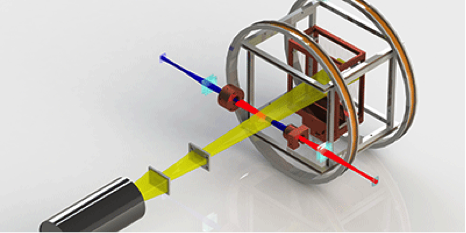Looking for a Dark Matter Signal in Atomic Spectra
Most terrestrial dark matter searches look for signatures of dark matter particles scattering off other particles. Researchers have now demonstrated a new search strategy that involves detecting variations in atomic spectra that would result from possible dark matter–photon interactions. A two-year study of a certain heavy atom’s spectrum found no such signal, allowing the team to set strict limits on very-low-mass dark matter particles.
Dark matter searches often focus on particles with masses in the to eV/ range, but other well-motivated candidates, like axions and dilatons, weigh much less than eV/ . Some of these ultralight particles are predicted to have interactions with photons that would cause the fine-structure constant α to fluctuate with time. The effect would, however, only be significant if the dark matter particle has a mass less than about eV/ , which is a mass range that has only been partly constrained by equivalence principle tests and cosmological observations.
A team from Stanford University in California and the Helmholtz Institute Mainz in Germany has devised an experiment that could potentially detect a dark matter influence over α. For their study, they chose the rare-earth element dysprosium, which has a unique α sensitivity in one of its electronic transitions. If α were to increase, the energy of this transition would increase for one isotope of dysprosium (Dy- ), but for a different isotope (Dy- ) the transition energy would decrease. The researchers measured the transition in both isotopes, but they detected no fluctuations on various time scales. The null result places the tightest constraints so far on dark matter in the to eV/ range.
–Michael Schirber
This research is published in Physical Review Letters.





